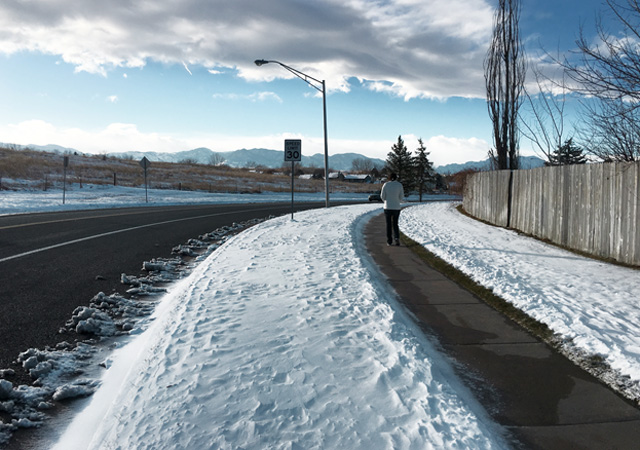The Local newsletter is your free, daily guide to life in Colorado. For locals, by locals.
A city that doesn’t plan ahead can bet on becoming, well, Houston. So far, Denver should be commended for its smart urban development, says Christopher Zimmerman of Washington, D.C.–based Smart Growth America, and local leaders want to continue that trend. Early this year, they’re launching an initiative that will culminate in changes to the city’s master plan, Blueprint Denver, which, having been adopted in 2002, needs an update thanks to the build-out of FasTracks and the area’s recent population boom. The first step is soliciting resident advice through online outreach and meetings (check denvergov.org for dates). To prepare, take a look at how other places have tackled the problems currently pestering Denver.
Fatal Flaws
The problem: Denver posted a pedestrian fatality rate of 2.16 per 100,000 residents in 2013, above the national average of 1.5.
Who’s solved it: The Swedes, whose Vision Zero Initiative, adopted in 1997, aims to eliminate traffic-related deaths (and has very nearly succeeded) through “traffic calming measures” like skinnier lanes, lower speed limits, and features such as planters and trees along thoroughfares. Basically, anything that keeps motorists from getting too comfortable.
Will it happen here? Mayor Michael Hancock allocated $350,000 in his 2016 budget to a Vision Zero education campaign. That’s nice, but local advocates say it’s actual infrastructure, not just education, that lowers fatality rates.

A Walk in the Parking Lot
The problem: ParkScore, a Trust for Public Land website that measures how cities meet the need for parks, ranks Denver 16th out of 75. We’d score a lot higher if the city devoted more than just 7.9 percent of its total area to parkland, but that’s a tough sell in our becoming-denser-by-the-day metro area.
Who’s solved it: Chicago (see Millennium Park, pictured), St. Louis, and San Francisco, where city leaders made the most of their limited space by building parks on top of subsurface parking garages.
Will it happen here? There’s a tentative idea—more like a thought bubble—to raze half of Sculpture Park, build a three-story parking garage, and put a more functional park on top of the structure.

Where the Sidewalk Ends
The problem: If pedestrians don’t have sidewalks, crosswalks, and lighting that connect them to transit stops, they’re not going to use public transportation. A 2015 WalkDenver survey revealed many of our first- and last-mile connections need upgrades, with sidewalks requiring the most help. In Denver, property owners pick up the tab for sidewalks, so wealthy areas can pay for nice ones and poorer neighborhoods can’t.
Who’s solved it: Westminster, which adds $6 to monthly utility bills for sidewalk repairs and street lighting. Result: 90 percent of its sidewalks are in acceptable condition.
Will it happen here? Denver’s City Council has tagged pedestrian infrastructure as a priority but has yet to approve a set-aside to fund sidewalk improvements.
Bad Influences
Cities that are up to no good (from a city-planning perspective).
Houston
Highway loop upon highway loop around downtown may have boosted property values in the ’burbs, but they also created a culture of cars—and thus traffic jams.
Atlanta
Hotlanta actually developed a regional transportation plan back in 2012 that would’ve helped tackle congestion problems. But suburbanites voted it down for a number of reasons—which is why it still takes four hours to get home after another Braves loss.
Riverside, California
More than 66 percent of residents live more than 10 miles from a central business district, helping make this California metro area the sprawling-est one in the country, according to Smart Growth America.
—Embedded photos courtesy of iStock









